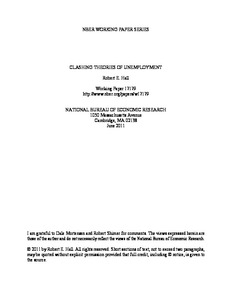Clashing theories of unemployment
"General-equilibrium models for studying monetary influences in general and the zero lower bound on the nominal interest rate in particular contain implicit theories of unemployment. In some cases, the theory is explicit. When the nominal rate is above the level that clears the current market f...
| Main Authors: | , |
|---|---|
| Institution: | ETUI-European Trade Union Institute |
| Format: | TEXT |
| Language: | English |
| Published: |
Cambridge, MA
2011
NBER |
| Subjects: | |
| Online Access: | https://www.labourline.org/KENTIKA-19177270124919954529-Clashing-theories-of-unemploym.htm |
| Summary: | "General-equilibrium models for studying monetary influences in general and the zero lower bound on the nominal interest rate in particular contain implicit theories of unemployment. In some cases, the theory is explicit. When the nominal rate is above the level that clears the current market for output, the excess supply shows up as diminished output, lower employment, and higher unemployment. Quite separately, the Diamond-Mortensen-Pissarides model is a widely accepted and well-developed account of turnover, wage determination, and unemployment. The DMP model is a clashing theory of unemployment, in the sense that its determinants of unemployment do not include any variables that signal an excess supply of current output. In consequence, a general-equilibrium monetary model with a DMP labor market generally has no equilibrium. After demonstrating the clash in a minimal but adequate setting, I consider modifications of the DMP model that permit the complete model to have an equilibrium. No fully satisfactory modification has yet appeared." |
|---|---|
| Physical Description: | 40 p. Digital |

